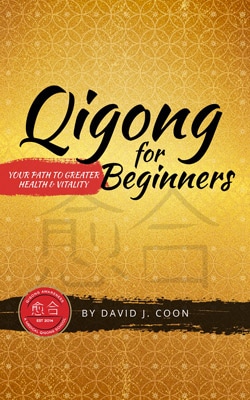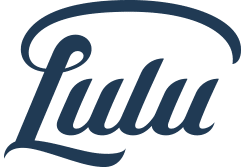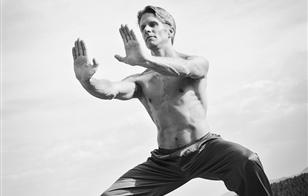Qigong has been proven to help in the treatment of different kinds of pain, ranging from muscle aches to joint pain to injuries. Even beyond localized areas, Qigong can alleviate chronic pain or symptoms of severe illnesses. In this post, we’ll discuss some of the different ways Qigong works to treat pain and the benefits of a regular Qigong practice for helping the body to heal itself.
Can Qigong help with pain in the body? How?
Qigong has many health benefits, and one of them is the alleviating of discomfort or pain. For example, the fluid movements of Qigong exercise are designed to stretch and loosen the body. This means that any specific areas of discomfort will receive better blood circulation, alleviating tension that has built up in that area. As an exercise that focuses on gradually increasing the body’s range of motion, Qigong practice also results in improved mobility of the joints, reducing stiffness that leads to joint-pain and arthritis (you can read more about Qigong’s effects on flexibility and mobility in our post here). Therefore, Qigong helps both to alleviate pain symptoms and increases energy flow to those areas of pain.
Beyond specific areas of discomfort, however, Qigong has also been proven to alleviate chronic pain. As an example, our Qigong Master David J. Coon was diagnosed with severe scoliosis at 15. By the time he was 25, doctors had told him he had the spine of an 85-year-old.> However, after studying various kinds of Western medicine, Eastern medicine, Medical Qigong, Martial Arts, and Meditation, David was able to heal his spine completely by learning to harness Qi, universal life force.
What is the role of Qi in healing the body?
Qigong is the practice of cultivating “Qi,” or the life force that exists within us and all around us. When our Qi is blocked (sometimes called “Qi stagnation”), it can cause a disruption or imbalance in our lives, emotionally and physically. Qi stagnation can result in a lot of different effects, including increased pressure, swelling, or pain in specific parts of the body. It can also cause emotional stagnation or a feeling of being overwhelmed. If Qi is blocked or disrupted, pain will eventually be inevitable. Qigong exercise and Medical Qigong are about finding equilibrium so Qi flows in our bodies harmoniously.
An important aspect of Qigong that isn’t discussed in Western medicine is that our external pain is often directly tied to emotional and energetic blockages. These blockages can then cause physical issues internally as well as externally. If we experience lower back pain, the cause might not simply be that we are hunching too much—instead, the cause could be stress, fatigue, or dysfunction of our internal organs. For example, lower back pain is frequently caused by distress of the kidneys. But it can also be true of internal organs that seem distant from our external pain: for instance, shoulder pain is sometimes caused by tension in the gallbladder. You might think, how can that be? Isn’t your gallbladder on the mid part of my body, while my shoulder is near my neck?
Traditional Chinese Medicine, such as acupuncture or Qigong, works by healing through the meridians, or energy channels, that exist throughout the body. This can be a helpful way to understand how our body functions as a whole—body parts are not disparate, but are interconnected through pathways that carry energy. Additionally, our bodies have epicenters where energy is stored (like a reservoir), supplying the meridians with that energy to be transported to different parts of our bodies. For example, the epicenter around the navel is called the “lower Dantian,” and it feeds energy to our entire nervous system. Lower back pain is frequently linked to this epicenter. If your Qi is blocked and unable to flow freely through your stomach or intestines, this will eventually result in blockages all the way up your back and to your shoulders. Qigong works to release pain by unblocking Qi stagnation and recirculating energy to the body through those energy channels thereby making it easier for the body to then heal itself.
Is Qigong exercise painful? What are the side effects?
Qigong is a gentle, low-impact exercise that is highly adaptable to various physical and health needs. In and of itself, it is not painful. However, the healing process can at times be intense. Part of Qigong practice involves letting go of old patterns of thought, pent-up feelings, and experiences that no longer serve us, so we can make space for new thoughts, feelings, and experiences. Even as we heal, this process can bring up a lot of emotional and physical discomfort. This can also be explained through what Modern Day spiritual teacher Eckart Tolle calls the Pain Body. All of us have had different experiences that make us who we are today—and those experiences linger within us in an energy field that exists beneath our physical body. In this pain body, our experiences, memories, and thoughts are congested, and can be the source of stress. One of the goals of Qigong is to release this congestion by harnessing Qi. In this way, there may be moments when healing in Qigong can feel challenging. If you’re interested in learning more, David talks about the pain body in more detail in this post.
Overall, Qigong will improve your mood, increase energy levels and aid in relaxation. However, people do sometimes experience side effects such as dizziness, headaches, or physical soreness. As with any exercise, take things slowly. Qigong is about the gradual build-up of strength, so we recommend you to not rush into anything, drink lots of water, and rest as needed. Remember, the goal is to cultivate Qi—not dominate it, or use as much as you can—so be patient and listen to your body as you integrate your practice one step at a time.
What Qigong techniques can you use to heal pain?
Working with the breath is one of the most important aspects for treating any kind of pain through Qigong. This is because the breath is vital for clearing toxins from our internal organs, blood, and muscle tissue. When we take a deep breath in and exhale, accumulated toxins are released through the exhale. The breath is key to healing internal organs and external pain, and it is the first place to start.
Exercise for healing lower back pain
Here is a very simple exercise for healing lower back pain. It can be practiced lying down and is very simple.
Take both hands and place them on either side of your navel center. The placement of your hands doesn’t have to be exact, but they should rest comfortably on your body. Bring attention to your navel center. Taking deep, slow, inhales and exhales, bring awareness to your lower gut, kidneys, pelvis. Observe what happens quietly for 20 minutes. Try this for a week to start, and take note of what changes begin to occur over that week.
This is a simple exercise that focuses attention on the Qi through the lower Dantian. It helps with fatigue and anxiety as well as pain and can be done any time of day.
Here is a video of David discussing this exercise in more detail.
Here is a video of David explaining breathwork in relation to healing pain.
Exercise for resting while in pain
Sleeping can be difficult when your body is in pain, but it is crucial for recovery. There are many Qigong exercises that calm the mind and body, aiding in better sleep and therefore having a tremendous impact on relieving pain symptoms. For greater relaxation in sleep, try this exercise.
Lay down on your back and raise your legs, if possible against a wall, with legs mostly straight. You can also use pillows if more comfortable. One of the main goals is to get the feet above the level of the heart. It is recommended to place your hands in the centerline of your body with one hand over the navel center and one hand over the heart center. Relax and notice that your breath will naturally begin to regulate itself after several minutes or more of this practice. It is recommended to try this exercise for 10-20 minutes. Not recommended for pregnant women and during menstruation.
If you’re interested in finding out more, we offer free webinars that guide you through Qigong techniques for treating pain.
Here is a past session led by David about the power of Qigong in reducing stress, anxiety and pain.
We will also be hosting another 2-hour webinar on Qigong for Back Pain on Saturday, May 13th, 2023. Focusing on techniques for healing lower, middle, and upper back pain, the webinar will include a Medical Qigong lecture on the benefits of Qigong for treating pain. Join us live or online for this free event: Qigong For Back Pain – May 13th, 2023







